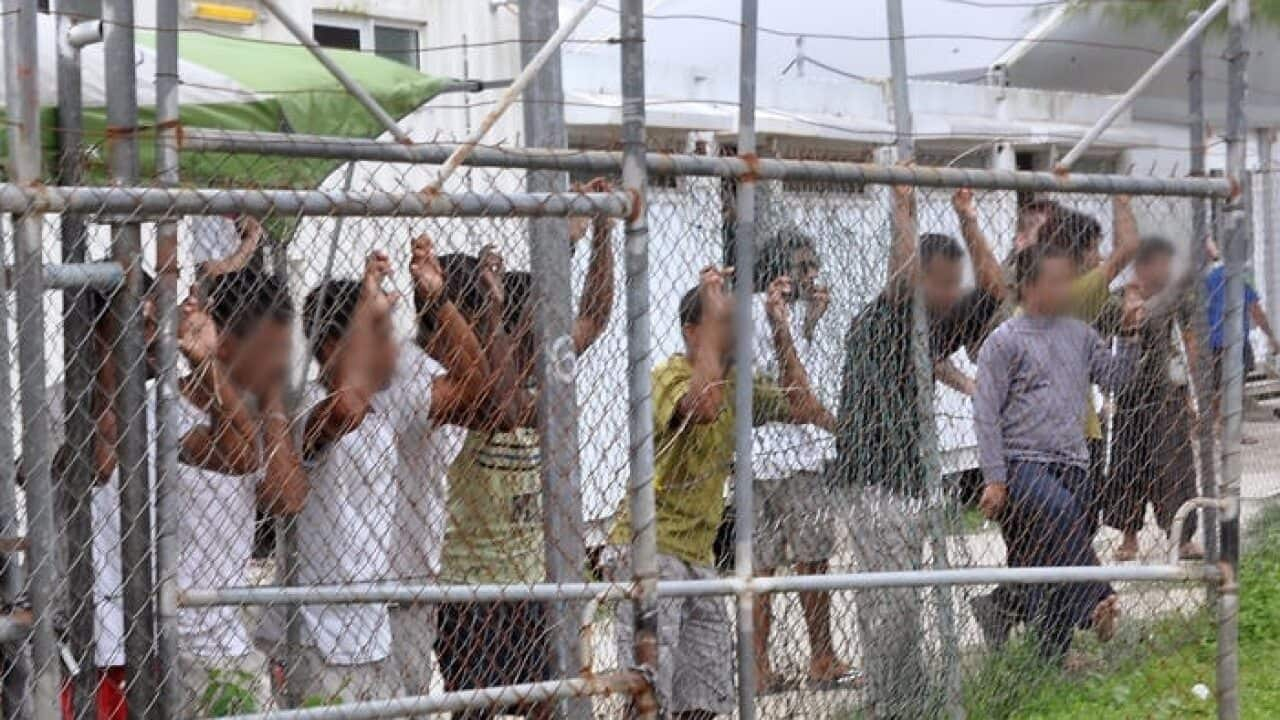Loghman Sawari was 17 when he first entered Australia's immigration detention network.
Eight years on, he's still there.
"It is painful. It has been eight years of my life. It is already gone," he told SBS News from the Brisbane Immigration Transit Accommodation (BITA) centre.
A member of Iran's Ahwazi Arab minority, Mr Sawari fled Iran in 2013 after his family was targeted by government forces. His brothers had been jailed by intelligence officers and a cousin was killed by hanging.
On 19 July 2013, a day before Mr Sawari boarded a vessel from Indonesia to Australia, the then-Labor government mandated a new law to send asylum seekers arriving by boat offshore.
When Mr Saawri arrived at Christmas Island on 24 July, he was unaware things had changed.
He spent the next six years detained on Manus Island and Port Moresby.
In that time, he witnessed the murder of Reza Berati in February 2014. Eighteen at the time, he said he was also a target of violence by rioters attacking the detention centre on Manus Island, with a brick hurled at his head.
"The locals attacked us. They broke the fence and came in," he said. "It is very scary, even recounting this. My heart is beating really fast because we witnessed many things we weren't supposed to see."
"It is very scary, even recounting this. My heart is beating really fast because we witnessed many things we weren't supposed to see."

Loghman Sawari was put into Australia's detention network at the age of 17. Source: Supplied
Mr Saawri was transferred to Australia in 2019 under the now-repealed medevac law, first to a Kangaroo Point motel detention facility in Brisbane and then to BITA.
Now, he has one wish: to be resettled in a third country.
"I am looking for freedom and a safe place, wherever around the world, it doesn't matter - a safe place where someone can respect my identity and respect my person," he said. That wish was close to being realised last year under the resettlement deal struck in 2016 between the US and Australia.
That wish was close to being realised last year under the resettlement deal struck in 2016 between the US and Australia.

Loghman Sawari has been in detention for eight years Source: AAP
Mr Sawari's health checks and other procedural requirements had been completed and a date was set for a flight to the US - 17 December.
It never eventuated.
"I had the date, my friend in America was told I would be arriving, everything was clear ... but I am still here," Mr Sawari said.
'Dark chapter of Australian history'
It's now been eight years since the Australian government's offshore detention program came into force.
The anniversary has sparked renewed calls for asylum seekers languishing in Australia's detention network, like Mr Sawari, to be set free.
Ian Rintoul from the Refugee Action Coalition said Australia's offshore detention policy has caused a great deal of suffering.
"19 July 2013 marked the beginning of one of the darkest chapters of Australian immigration history," he said.
"The Australian government is using every aspect that it has at its disposal to make life as difficult as possible for people they have an obligation to protect."
At least 962 people from Australia's detention network have been resettled in the United States.
Discussions continue over a 2013 offer from New Zealand to resettle 150 refugees a year.
Last month, Home Affairs Minister Karen Andrews said talks had resumed on the deal.
"The Australian government should accept New Zealand’s repeated offers to take some of the refugees, and work toward ending offshore processing once and for all," said Sophie McNeill, Australia researcher at Human Rights Watch.
Processing asylum seekers offshore cost Australia $8.3 billion between 2014 and 2020, according to the Refugee Council of Australia.
The federal government has repeatedly said asylum seekers arriving in Australia by boat will not be resettled here.
In a statement, the Department of Home Affairs said it does not comment on individual cases and “temporary transfer to Australia to receive medical treatment is not a pathway to settlement”.
“Transitory persons are encouraged to finalise their medical treatment so they can resettle in the United States or other third country, return to Nauru or Papua New Guinea, or voluntarily return home or to a country in which they have a right to reside,” a spokesperson said.
“The United States will determine who and how many people will resettle under the resettlement arrangement. The Australian government supports and facilitates the United States’ processes, but does not have any role in decision making.”











